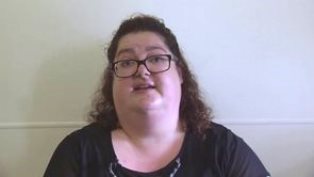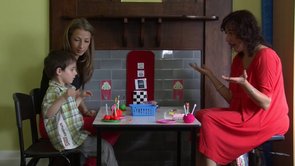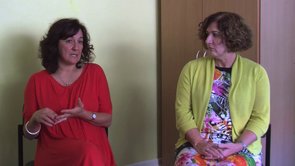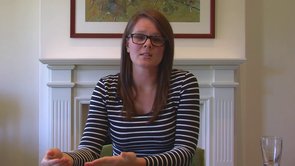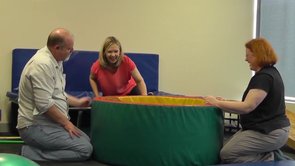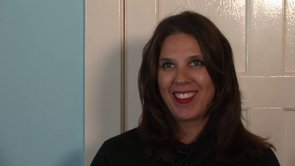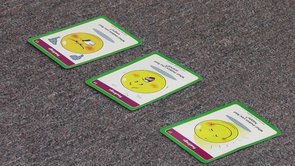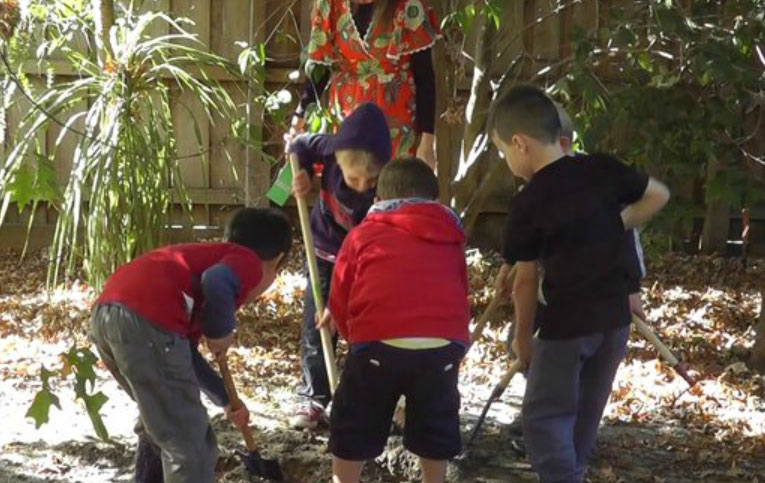Where to start
There are many different therapists and therapies available for children with ASD. Below, you will find a description of some of the therapists who commonly work with children with ASD. It is important to take your time in choosing the right therapy for your child and the right therapist to meet the needs of your family.
Research has shown that a multidisciplinary approach to early intervention in children with ASD provides the best developmental outcomes. The early years are a key time of development for any child. As children with ASD will often have complex needs, accessing multiple therapies together will provide well rounded, holistic care for your child.
A multidisciplinary approach to therapy means that different therapists will be working with you and your child at the same time. Therapists may work within the same clinic or you may access a number of therapists from different clinics. It is important that therapists coordinate with the other members of the team to ensure that goals and strategies being used are shared.
Sometimes therapists may conduct joint therapy sessions. It is important that the team around your child works in a coordinated way. Good practice suggests that one of the therapists who see your child should be coordinating this for you, but in some cases you may be in charge of directing this. Throughout this resource, you will find useful information to help you with this.
Speech Pathologist
Speech pathologists or speech therapists help children with ASD in the following areas:
A speech pathologist will work with your child to develop their communication skills. When we think of communication, the first thing that springs to mind is usually verbal communication, which refers to speaking and understanding language, either with or without aids for support. Communication also includes non-verbal communication, which refers to elements such as gesture (including signing), facial expression (including eye contact), and body language that help us communicate our message, and understand the messages that others are sending to us.
Receptive Language
Receptive language is how well your child understands language. It can refer to how well they understand information that is given verbally (in words) or in written form. A speech pathologist will usually assess your child’s receptive language and then work with them on various tasks to improve their receptive language. An example of a task that targets receptive language skills could be showing a child a number of pictures on a page and giving the instruction, “point to the yellow box and then point to the blue circle”.
Expressive Language
Expressive language is how your child uses language to express their needs and wants, thoughts and feelings. It includes the use of grammar (for example, “I went” instead of “I goed”) as well as the use of gestures and facial expression. For children who are non-verbal, language may be expressed through key word sign or pictures.
Pragmatic Language and Social Skills
Pragmatic language refers to the social communication and language skills we use in our day to day interactions. It includes what we say, how we say it (both verbally and non-verbally) and how appropriate it is to the given situation. Good pragmatic language is critical for successful social interaction.
Social skills help us in our communication and interaction with others. Speech pathologists might work on your child’s social and play skills to help strengthen their relationship with peers, siblings or adults. The speech pathologist might help your child understand the social rules of conversation (including taking turns in conversation, asking questions about the other person, politely starting or ending a conversation). Social skills might be taught one-on-one (the therapist works with your child alone), or as part of a group of children learning and practicing social skills together.
Visual Supports
Many Speech Pathologists will use visual supports when working with children with ASD. For more information on visual supports, visit our section on Visuals.
Other areas that a speech pathologist may assist with are:
- Stuttering : Also called disfluency, stuttering affects the child’s fluency of speech. For example, a child might say, “I s-s-s-s-said we were playing dress-ups”.
- Articulation: This is how a child makes sounds in words. Children with articulation difficulties might say ‘sree’ instead of ‘three’, or ‘wabbit’ instead of ‘rabbit’.
- Voice: This includes children that find it difficult to control the volume, pitch, or pace of their voice.
- Phonological Awareness: This is the awareness of all of the sounds in words and plays an important role in learning to read.
- Eating and Drinking: This includes children that have difficulty with the physical mechanisms required for eating, as well as children that have self-restricted diets.
For more information on the areas of development that a speech pathologist can assist with, please see the choosing therapy section.
Speech Pathology Australia is the national peak body for the speech pathology profession. For more information, please visit www.speechpathologyaustralia.org.au
Occupational Therapist
Occupational Therapists (often called OTs) help children with ASD in the following areas:
Sensory Processing
Sensory processing is how your child makes sense of what they see, hear, touch, taste, smell and feel. An occupational therapist will be interested in how your child’s understanding of sensory input affects their motor planning, body awareness , and spatial awareness. An occupational therapist will look at how sensory processing affects your child’s functioning in different settings, such as at home, at kindergarten, at childcare or school, at the shopping centre, or at parties or outings. For more information on sensory processing, see the Sensory Processing section.
Fine Motor Skills
Fine motors skills are ones that use small muscle movements usually in the hands and fingers to manipulate and control materials or objects. Occupational therapists might work with your child to improve fine motor skills for everyday tasks. They may work with your child on tasks that involve grasping (for example using a crayon or pencil), manipulating objects (such as moulding playdough, fitting puzzle pieces, using scissors, or sewing) or activities that require hand-eye coordination (like threading, writing, doing up buttons and zips, cutting around a circle or using a computer mouse).
Gross Motor Skills
Gross motor skills are ones that use the larger muscle groups and include activities like running, skipping, hopping, climbing and throwing a ball. An occupational therapist can work with your child to develop their balance, strength and coordination in physical activities. Activities might include completing an obstacle course where they have to run, climb, hop through hoops, throw bean bags into a bucket and walk along a rope.
Self-Care Skills
Self-care skills are skills such as dressing, toileting, bathing, eating, and sleeping. Occupational therapists can develop programs for families to use at home to work on these skills. For example, a program might be created to teach your child how to wash their hair or unpack their lunch box.
Social Skills
Social skills help us in our communication and interaction with others. Occupational therapists may work on your child’s social and play skills to help strengthen their relationship with peers, siblings or adults. Examples might be saying hello and smiling, asking someone to join in a game, or practicing turn taking. Social skills might be taught one-on-one (the therapist works with your child alone), or as part of a group of children learning and practicing social skills together.
Visual Perception
This includes understanding, interpreting and remembering what is seen. Visual perception is necessary when learning to read and write.
Cognition
Cognition is the mental process of acquiring knowledge. An occupational therapist can help your child in this area by working on developing their attention and concentration, problem solving ability, and organisational skills.
For more information on the areas of development that an occupational therapist can assist with, please see the choosing therapy section.
For more information or to look for an Occupational Therapist in your area, please visit the Australian Occupational Therapy Association website www.ausot.com.au.
Psychologist
Psychologists help children with ASD in the following areas:
Behaviour
Psychologists work with you to increase your child’s positive behaviours and reduce or eliminate negative behaviours. They may do some work with your child, but they will usually work with parents to help you come up with ways to manage your child’s difficult behaviours.
Anxiety and mood
Children with ASD can become worried or unhappy and have difficulty finding appropriate strategies to manage this. Psychologists can teach children and parents strategies to help your child relax and improve mood.
Emotion perception
Psychologists can work with children to help them to identify and understand feelings and emotions in themselves and others.
Social skills
Psychologists help children build social and friendship skills. They may give you strategies to encourage your child’s social development, but they will usually work with your child (either one on one or in a group) to teach positive social skills, such as turn taking, waiting, saying hello and being friendly.
Emotional support
Psychologists can provide emotional support to a child with ASD to build their self-esteem, help them to express their emotions, and help them to deal with situations like being teased or bullied. Psychologists may also help parents, siblings and other family members cope with the stresses of living with a child with ASD.
Cognition
Cognition is the mental process of acquiring knowledge. A psychologist will often conduct a cognitive assessment (or ‘IQ test’) with your child to measure their pattern of strengths and weaknesses to help come up with ways to help them learn. Psychologists can then suggest strategies to work on their attention and concentration, problem solving ability, and organisational skills in different settings such as at home or at school.
ABA Therapy
Some psychologists base their therapy on the principles of Applied Behaviour Analysis (ABA). ABA is an intensive and highly structured program that involves breaking down complex skills (or behaviours) into smaller steps and teaching these skills through the use of clear instructions, rewards and repetition. ABA helps children to learn the social, academic, self-help and behavioural skills they need to interact with others and to cope with the challenges of everyday life.
For more information on the areas of development that a psychologist can assist with, please see the choosing therapy section.
The Australian Psychological Society is the professional association for psychologists in Australia, to find out more please visit www.psychology.org.au
Other Health Professionals
Autism Spectrum Disorder is complex, and a number of health professionals might work with your child in addition to psychologists, occupational therapists, and speech pathologists.
It is a good idea to show all of your child’s therapy plans to each therapist or professional working with them, so that everyone is on the same page.
Group Therapy
Group therapy can be a great way for your child to practice the skills they learn with other children in a supported environment.
Some therapy clinics will offer early learning groups, transition to school groups, social skills groups as well as other types of group therapy sessions. There are many benefits to group therapy, and the video below outlines some of the ways that group therapy can help your child with ASD.
